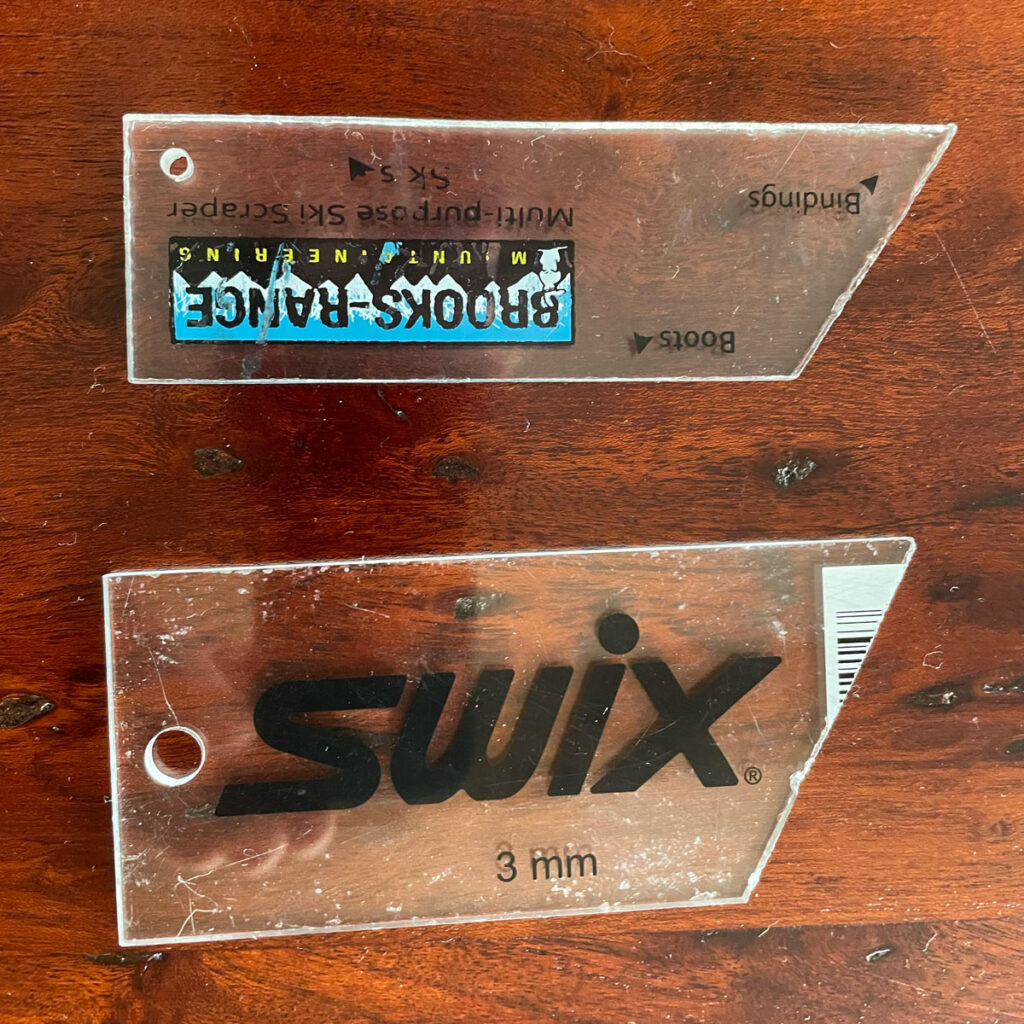- December 9, 2022
Tags
Pro Tip: Always Carry a Ski Scraper
I often joke that I have a nearly peerless ability to spend other people’s money. Ask me for advice about ski boots, new ropes, fancy tents, and I’ll blow $8,500 of your hard-earned cash faster than you can say “useless consumerism.”
This time, though, I’m here to sing the praises of a cheap, plastic tool. It easily fits in your pocket, won’t cost you more than a couple bucks, and you absolutely need it. Too good to be true? Behold, the plastic ski scraper!
So simple, yet so important. With a ski scraper you’ll clear your topsheets of ice and snow, squeegee the water out of your skins on a hot day, remove ice bits from the bases of your skis, and, most importantly, dig ice out of your tech toes. For mere ounces and the cost of a cup of coffee, a ski scraper lets you head troubles off before they sideline you on the epic pow day of the year. Some specifics:
- Cut the scraper at an angle so one corner comes to a sharp point. (Use an X-Acto knife or jigsaw—carefully.) This will help you dig ice out of the tech fittings on your boots, as well as excavate ice from the toes of your bindings. Believe it or not, it’s pretty easy to break your toe pieces by forcing them closed with ice beneath the springs and sole of your boot. Just as important, ice in your toe dimples or under the toepiece can result in pre-release. And pre-release means carnage on the down, especially in steeper terrain.

- Waxing your skins will help on days with wet, saturated snow. Touring in wet snow, you will eventually get water in your skins, potentially turning them into snow magnets when you tour into shady, colder snow. (Dry, cold snow will ball on your skins like moths to flame!) Bust out your ski scraper and squeegee the skins from tip to tail, forcing out as much water as you can. Then reapply wax. The skins will still give you troubles, but this technique will let you finish your tour with fewer temper tantrums.
- If you notice any buildup of snow or ice on your topsheets or bases, get in the habit of scraping them during transitions. I, of course, have the strength of 10 normal men, so hauling extra weight uphill is no big deal. But for regular humans, an extra 6 ounces of ice per ski can wreck a long day.
Rejoice in the simple, Zen utilitarianism of the plastic ski scraper. Let me know all the myriad ways you use it, and I’ll steal your ideas and present them as my own in a future article. Happy skiing and hope to see you during La Nina 3.0 this winter.
Rob Coppolillo is the author of “The Ski Guide Manual” and an IFMGA mountain guide living in Seattle, Washington.


